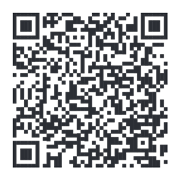

There’s no instruction manual, and not all of us had great examples of parenting when we were growing up. A lot of us are just figuring it out as we go along, and that’s ok!
From what I’ve learned as a parent, the most important thing is to love your children, followed closely by setting a good example. Babies start copying things they see really early on. You smile, and they smile back. Toddlers use this copying in their play, like pretending a toy is a phone or acting out stuff they’ve seen at home or on TV.

As parents, we’re the ones they watch and learn from every day. Even when we think they’re not paying attention, they are. For example, I was so embarrassed when my son blurted out a swear word at daycare. Where did he learn it? Unfortunately, from me at home. It taught me that my child is learning from me all the time.
It means we need to think about our own behavior – how we act, our habits, manners, how we treat others, what we watch, our work habits, and our relationships. Simply telling your child something isn’t enough anymore. We have to show them how to behave.
You’ve probably heard the saying, “Actions speak louder than words,” and it’s especially true with kids. For instance, if we tell them to eat their veggies, we should eat some too. Or if we tell them not to yell at their sibling, but then we yell at them for doing it, it’s confusing for them.
Basically, if there’s something you don’t want your child to do, you shouldn’t be doing it either. Is it hard? Yeah, at first. But don’t give up. It just takes practice and being consistent.
One thing you can do to help is to ask yourself, “Would I want my kids to copy this behavior?” If the answer is “No,” then it’s something you need to change.
What if you make a mistake? It happens to all of us. Just own up to it, fix it, and try not to do it again.
Install this web app on your iPhone: tap ![]() and then Add to Home Screen.
and then Add to Home Screen.
Side-Lying Hold
This hold is useful when:
Cross-Cradle Hold
This hold is useful when:
Clutch or “Football” Hold
This hold is useful when:
Cradle Hold
This hold is useful when:
Laid-Back Hold
This hold is useful when: